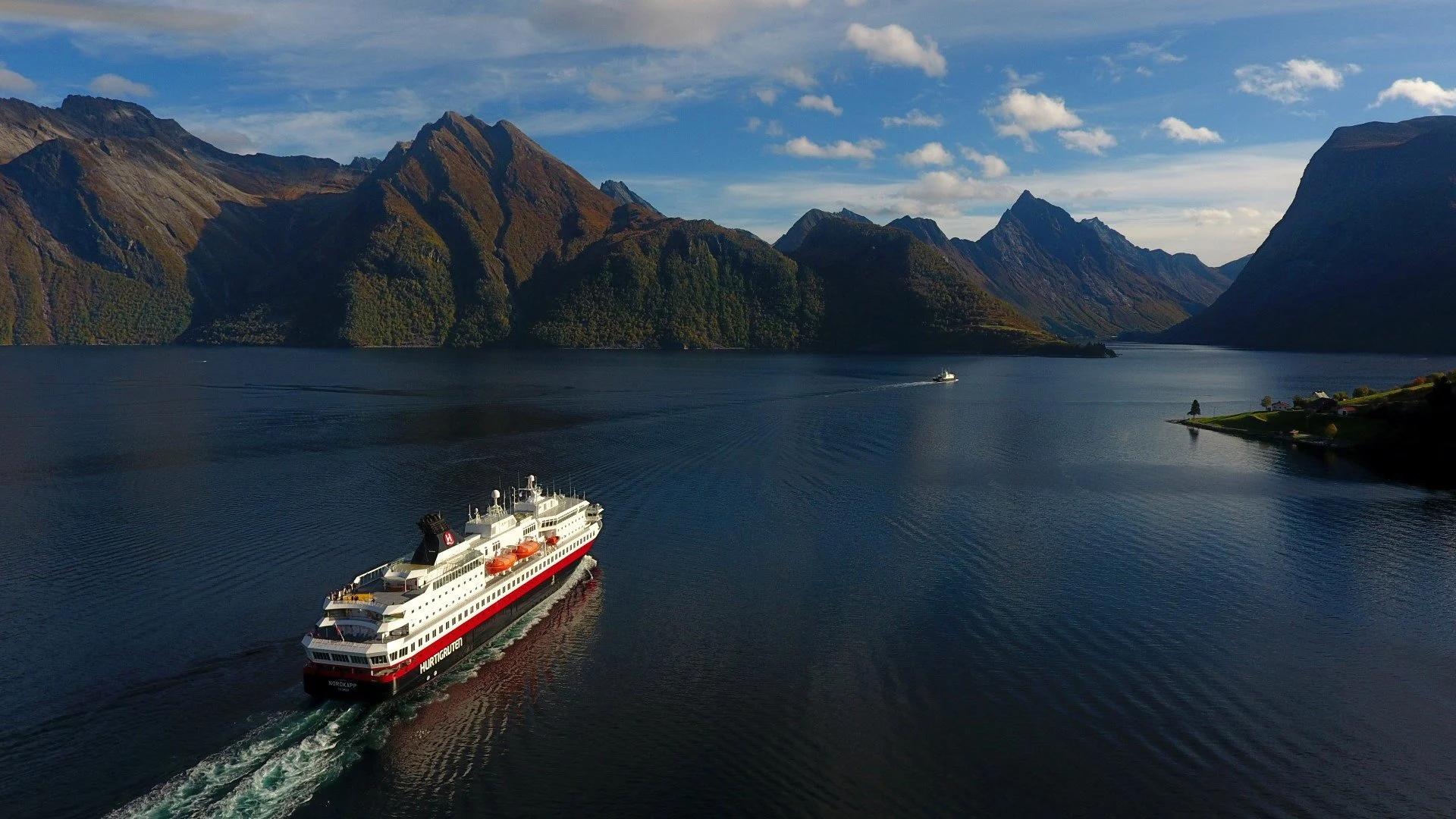
Our story together
We are generations of sailors, cooks, receptionists, waitresses all working to bind the country together. Since 1893, our ships have been a lifeline to coastal communities of all sizes and a way of life for the people who reside here.
You’ve trusted us to take you to the intimate places of the Norwegian coast; secret fjords, myth-inspiring mountains, hidden hamlets. We’ve brought you to spectacular landscapes under the glow of summer’s Midnight Sun and shown you the Northern Lights for the first time or the hundredth time.
You’ve come from near and far to travel side by side with local Norwegians, experiencing everyday life here and coastal culture at its most authentic and real. This is our story together, intertwined and connected at the heart of the Norwegian coast. We warmly welcome you to come and take your place in it.
A timeline of our history
1893
Captain Richard With establishes the Hurtigruten - a steamship service that links northern and southern Norway. Our first ever voyage on steamship DS Vesterålen leaves Trondheim on 2nd July 1893 and arrives in Hammerfest three days later, 45 minutes ahead of schedule.
1896
Hurtigruten starts the “Sports Route” between Hammerfest and Spitsbergen in Svalbard using DS Lofoten. Captain With ships a hotel to Spitsbergen from Trondheim on board the steamer DS Raftsund.
1898
The route along the Norwegian coast is extended further south and includes Bergen. There are now three departures each week.
1908
Kirkenes, near the Russian border, becomes the northern turning point of our voyage.
1922
The Risøyrenna channel in northern Norway opens, allowing us to connect ports in Vesterålen to our route. Our ship MS Finnmarken was the first to sail through it, with Norway’s King Haakon on board.
1925
DS Queen Maud is the first in a new generation of ships one and half times larger than its predecessors. All cabins now have running water and a ventilation system.
1936
Daily departures are introduced, and the fleet has 14 ships. More than 230,000 passengers, locals and tourists alike, travel on The Coastal Express each year.
1937
All our ships are equipped with a sonar depth finder, an electronic logbook, and a radio transmitter.
1940-1945
The occupation of Norway decimates the fleet. 14 ships and 700 lives are lost at sea. Redeployment of Coastal Express ships after World War II is given the highest priority by the government.
1949
MS Erling Jarl is the first in a series of post-war ships built between 1949 and 1964. These ships will be the backbone of the Hurtigruten fleet until the 1980s and 90s.
1952
Seven ships are added to the fleet. The entire fleet now carries over 500,000 passengers a year. The class system on board is no longer used.
1968
We begin sailing a route to the town of Longyearbyen on the island of Spitsbergen in the Svalbard archipelago. The Svalbard Express operates every summer until 1982.
1982
New vessels replace older ships, some with a revolutionary side hatch for easier loading and unloading.
1993
Our 100-year anniversary and the construction of MS Kong Harald mark the dawn of the modern era.
2001
MS Lofoten, built in 1964, is declared a national monument by the Norwegian government, a testament to our faithful service along the coastline.
2002
One of our new generation ships is in use in Chile for voyagers from Cape Horn to the Antarctic Peninsula, marking the beginning of the modern-day Hurtigruten Expeditions.
2006
The two companies OVDS and TFDS merge to form the present day Hurtigruten company. The new company has a unbroken record back to founder Richard With, the first sailing in 1893 and the Vesteralen Steamship Company.
2010
We ban the use of heavy fuel oil from all our ships and advocate for a worldwide ban on the highly polluting and toxic fuel.
2011
For five and a half days, the journey on MS Nordnorge from Bergen to Kirkenes is broadcast live on Norwegian television using 11 cameras. At 134 hours, 42 minutes and 45 seconds, it enters the Guinness Book of Records as the world’s longest live broadcast.
2015
Hurtigruten Foundation was established to reinvest in the communities we visit and to support environmental initiatives. We also launch our popular Northern Lights Promise for our winter voyages.
2018
Tonnes of single-use plastic items are removed and banned from the ships fleet-wide. We celebrate our 125-year anniversary with a big, plastic-free party.
2020
MS Lofoten, the longest serving ship in our history, is finally retired. The ship had crossed the Arctic Circle more than 3,500 times and travelled a distance equivalent to over 200 times around the equator. MS Lofoten is now a training ship - educating future generations of Norwegian seafarers.
2021
We begin phasing in sustainable biofuels on our ships.
2022
Green upgrades start to transform some ships to hybrid power. MS Richard With starts sailing as a hybrid ship after having new engines and large battery packs installed. This cuts CO2 emissions by 25 percent. Our Sea Zero Project also launches to build our first emission-free ship by 2030.
2023
We commemorate our 130-year anniversary by launching two new voyages: The Svalbard Express and The North Cape Express.